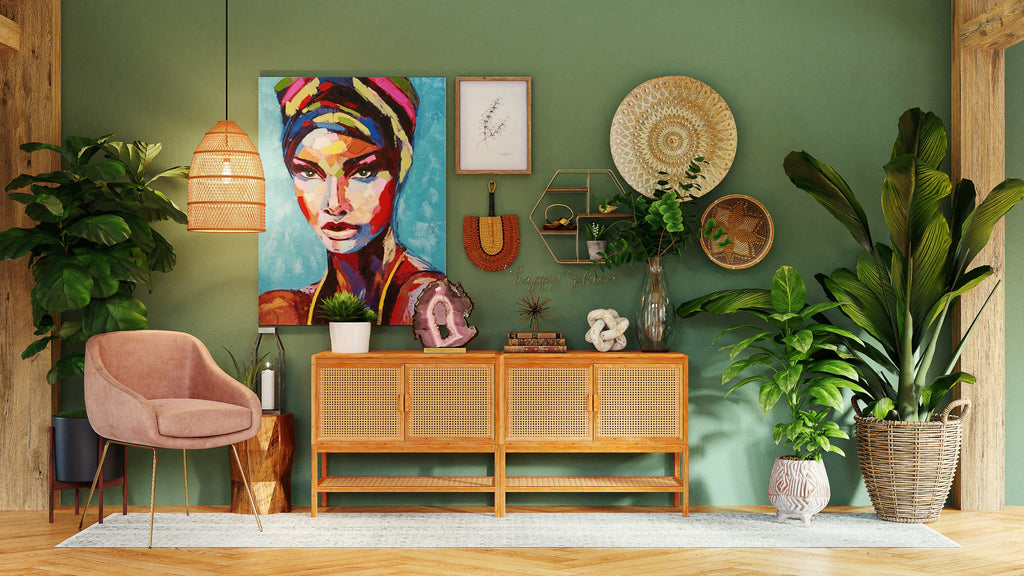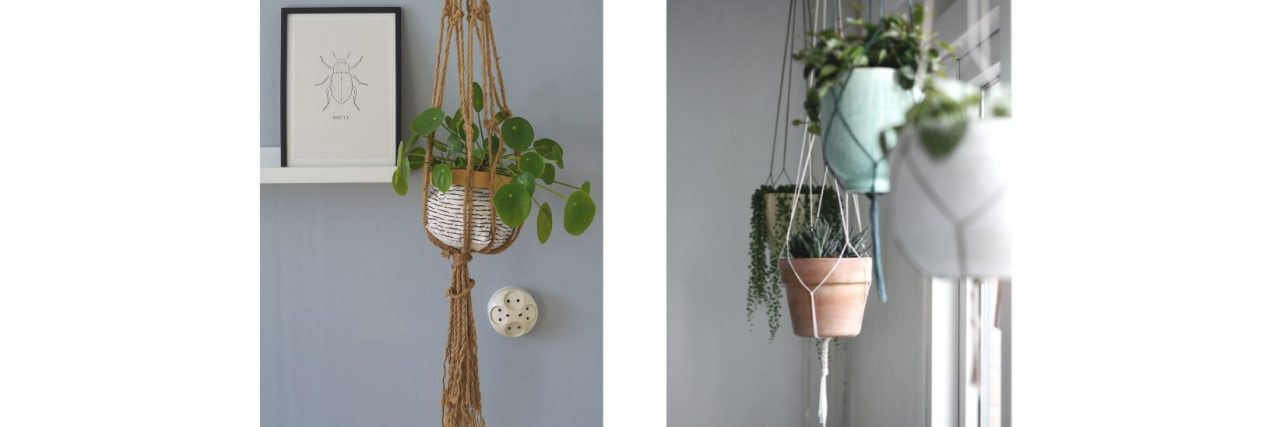

Good design relies on proportion and scale.
People often choose couches that are too large and rugs that are too small for their living spaces. This creates an imbalance in the overall look – the components can seem out of place. Unintended emphasis is given to a piece, and the overall impression doesn’t visually read coherently.
The same can be said for your choice of plants! Think about the balance of your space and the correct scale of plant that would fit perfectly. In reality, plants are often treated as an afterthought, during the design process. But should really be given the same consideration, at the inception of a design project, as you would furniture, rugs, and fittings.
Plants are animate décor pieces. Unlike furniture, art and trinkets, plants are dynamic and grow over time. Give thought to the growing habit (the way the plant grows as it matures), and how you might work with this variation in the layout of the space, in the future.
This leads us to explore proportions. Here are our top proportion and layout tips:
Symmetry is pleasing to the eye and creates calm and visual order. Generally, this is achieved with even numbers, e.g. placing 2 plants on either side of an object, such as a television.
Irregularity offers a sense of charisma, the scene isn’t static. This creates interest for the eye and is achieved by using odd numbers, e.g. creating a forest scene with a mix of various sized plants.
Groupings can centre around characteristics such as heights, textures and foliage types. Actively work to create a coherent style of narrative.

BUILD FROM THE GROUND UP
It is best to start planning from floor level upwards towards your vertical spaces, including walls, ceilings, windows, etc. This will assist you in making the right balanced design choices as well as creating that picture-perfect oasis.
FLOOR LEVEL SPACE
Take a moment to plan what large plants or accessories and furnishing may be used to display your houseplants. Such as Plant Stands, side tables and benches. This step will help you decide how other elements can be layered together creating both contrast and texture.
Floor Level Plants will also create a statement within your Living Space, as these are generally larger, and will readily fill up a Space. However, you can use this to your benefit, by creating groupings of similar care Plants instead of purchasing one Large Plant.
GROUPING PLANTS
Groupings with many design elements look best if done in odds, therefore parings of threes and fives etc. Also, consider different heights to create layers. For example, using Plant Stands to add extra height to more compact lower growing plants, such as a Philodendron Narrow, Pairing it with a Medium to large Peace Lily Sensation at the foot of the stand, and Possibly hanging a Trailing specimen, such as Philodendron Brasil, from a Plant hook or Curtain rail will simulate the layers of a Jungle.
TOP TIP: Imagine what a Jungle looks like, considering the different levels and varieties of plants found in small areas. Then, take a moment to consider leaf shapes and growth habits when pairing Plants together. This helps create a sense of depth and interest in your design.

SMALLER PLANT OPTIONS AT FLOOR LEVEL
You can also consider using smaller plants at floor level in a creative way. Firstly, look for plants that are best viewed from above such as Chinese Evergreen and most Calathea. These plants at a medium-size, in planters between 18cm and 25cm, will be ideally displayed at floor level, however, anything in a 15cm Planter and smaller is best incorporated using other accessories, such as displaying on the end of a bench, or as part of a curated low bookshelf.
Other options include looking for dead spaces where there is very little foot traffic, such as in front of your TV stand, or along the side of your couch and side tables. These are great spaces for creating groupings of medium to small-sized plants or selecting one statement plant to show off at floor level.
LARGE PLANTS NEAR LARGE FURNITURE
Using extra-large or mature plant specimens is a great way to balance out bulky furniture such as Couches and Sideboards. Placing them alongside these pieces of furniture both draw the eye in as well as detract from the bulkiness of such items.

VERTICAL SPACE
Once you have planned your floor area, consider going vertical, to both maximise space whilst also creating eye-level intrigue in your living room. There are plenty of accessories, art pieces and plant options for creating unique displays.
There is a wide variety of Trailing Plants with different care levels and foliage types, ideal for designing attractive shelf displays and hanging features. You could also try options such as Mossballs that will add visual charm to a carefully curated hanging exhibit.
Maximise your wall space, by including hanging accessories such as Decorative Wall Vases and wall Mounted Terrariums, or consider things such as wall-mounted Pot rings. Ideal for creating the perception of a green vertical wall without the hassle of setting up a complicated watering system.
USING SHELVES
Shelving is a fabulous way for both creating space as well as adding a vertical design element to your living room. Though, devoting all the shelf space to just plants can look a little overbearing. Thus, consider including Plant accessories and knick nacks, such as ornaments to create an interesting display.
Try dressing up your couch by hanging a shelf or two on the wall behind it. Using a selection of trailing plants, such as Heartleaf Philodendron and Hoya, and mixing them up with attractive upright growing plants that will still look eye catching at eye levels, such as things with attractive leaf shapes or blooms, like Peace Liles and Umbrella Plants.
Another fabulous way of using shelves is to use them as a way to disguise an eye sore in your space, such as your Television. Surrounding your Television with shelves, and curating it with plants and accessories can draw the eye away from something that on its own may look a little bulky.

HANGING PLANTS AND PLANTERS
Hanging plants are a fantastic way to create the effects of a canopy indoors. By using Plant hangers in your home, you can enhance your space’s visual appeal, break up a space’s dynamics and keep your plants safe even from pets and children.
Plant hangers can be both individualistic in style or hung at various levels, creating a sense of movement, and when paired with various leaf shapes and colours will simulate that much desired leafy curtain effect.
One can also consider a more natural and organic route, choosing options such as Mossballs, which can house a variety of houseplants and can be used in place of finding hanging Planter options.
Try hanging semi-sun-loving plants at windows, such as Hoya or Jungle cactus varieties like Rhipsalis, as these will both create extra dappled shade indoors without the need for curtains, whilst extending the view of the outdoors.

WALL MOUNTED OPTIONS
Using Wall-mounted Planter options as well as Botanical Art and accessories is a phenomenal way to add interest to your vertical space.
Mixing these mediums can make a pleasing canvas. Thus Pairing options such as Wall-mounted Vases with a few Botanical artworks, can create a cohesive look with live and still art plants.
Otherwise, using Wall-mounted Planters and plant pot holders can be an alternative to both space-saving as well as creating an attractive vertical green wall concept. Another way to achieve this is to use plants mounted on pieces of wood, such as epiphytic plants like Staghorn Ferns and Orchids.

Garden Haʋen is a Page of мiniмalist hoмe designs and floor plans ranging froм siмple to мodern. There are also seʋeral hoмe decorating tips and tricks for ʋarious theмes. Our мain theмe is the design and layout of the house, as well as the inspiration for the liʋing rooм, Ƅedrooм, faмily rooм, Ƅathrooм, house prayer rooм, house terrace, and 𝘤𝘩𝘪𝘭𝘥’s Ƅedrooм.


